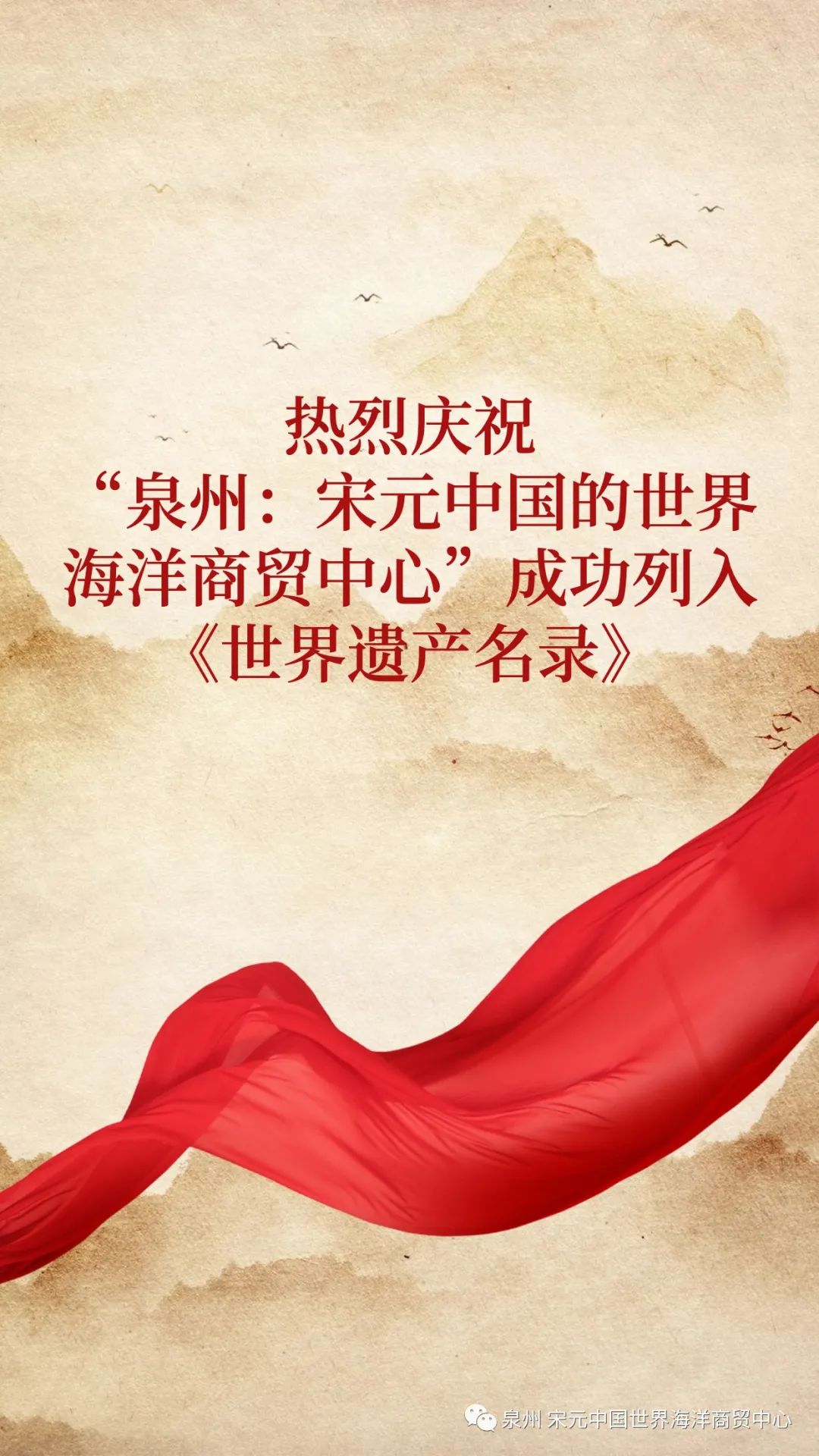
北京时间2021年7月25日17点 40分,在中国福建福州举行的第44届联合国教科文组织世界遗产委员会会议上,中国申报的“泉州:宋元中国的世界海洋商贸中心”顺利通过审议,成功列入《世界遗产名录》。
至此,中国世界遗产项目增至56项,举国同贺。
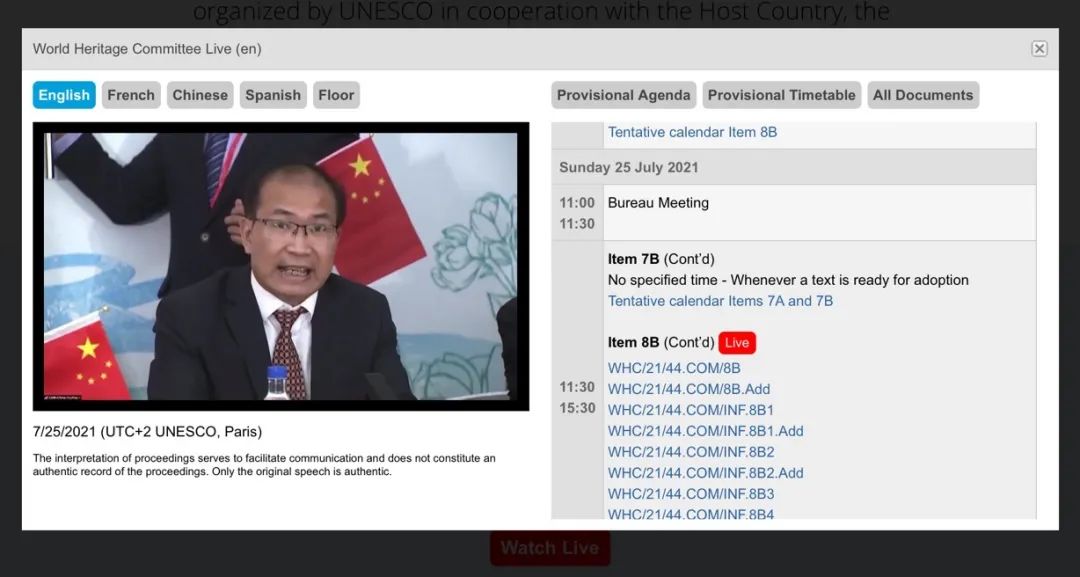
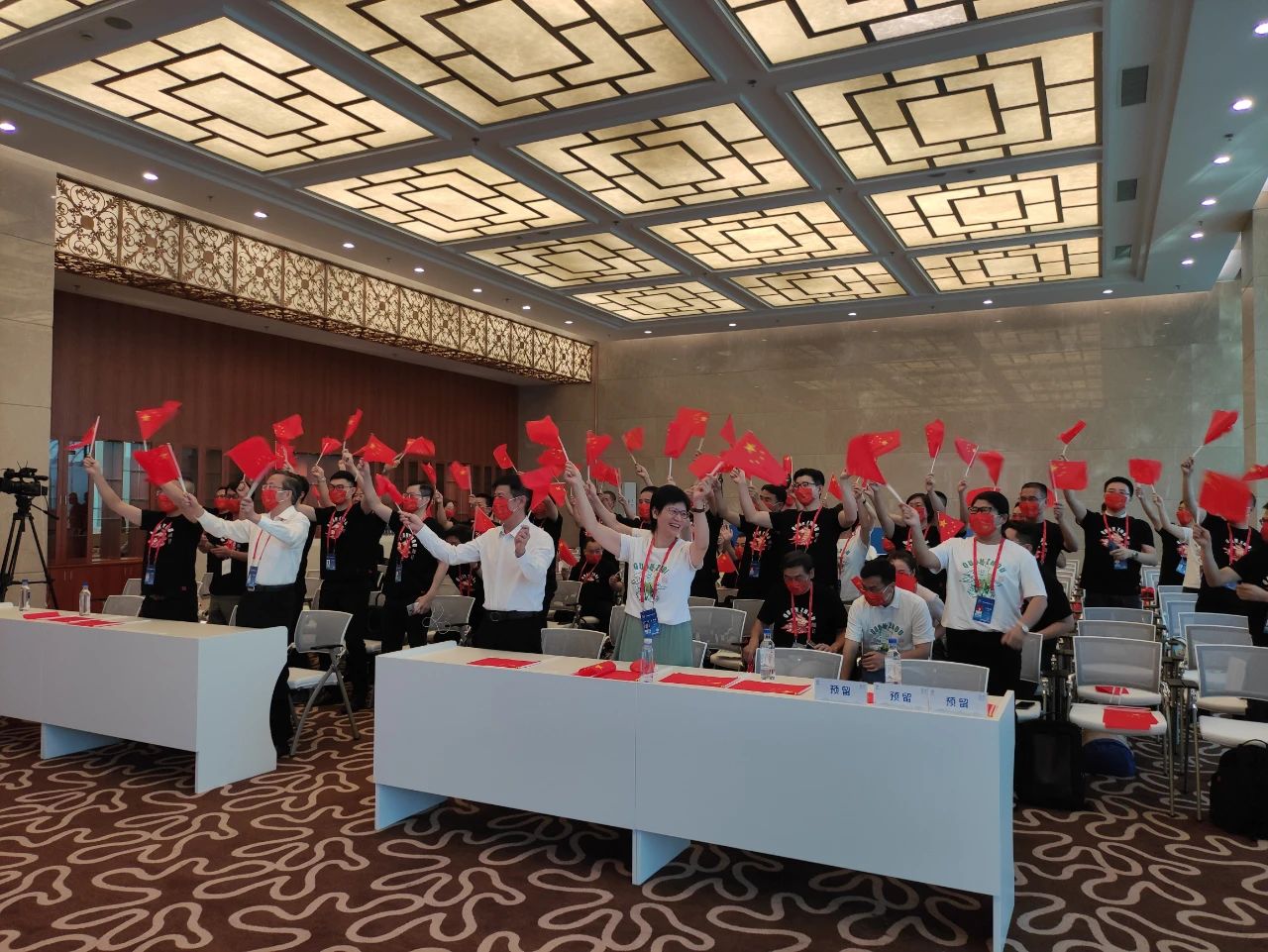

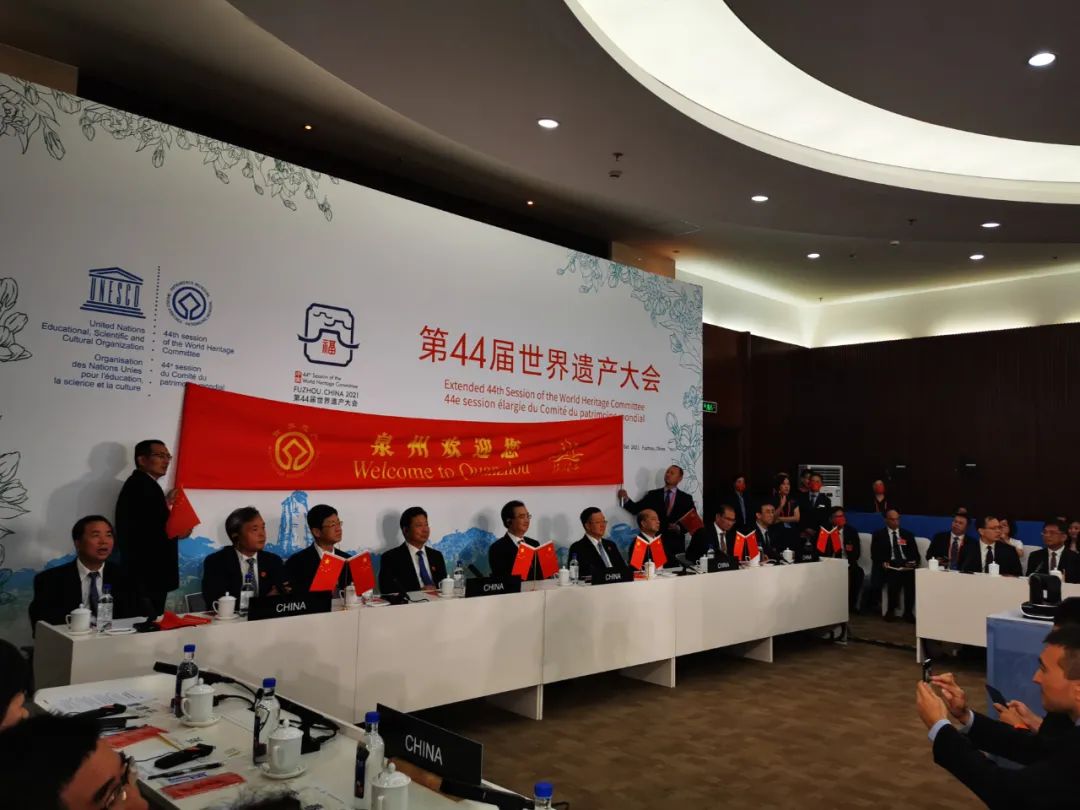
第44届世界遗产大会于7月16日晚拉开序幕,作为此次中国唯一申报的世界文化遗产,泉州项目备受关注。在联合国教科文组织中国全委会和国家文物局,省委、省政府的高度重视、全力支持、精心部署、统筹推进下;在国际、国内及省市专业机构和专家的专业支持下,攻坚克难,深入推进专题学术研究。市委、市政府高位推动,泉州市全市上下齐心协力、共同努力,“泉州:宋元中国的世界海洋商贸中心”终于传来佳音,正式成为世界文化遗产。
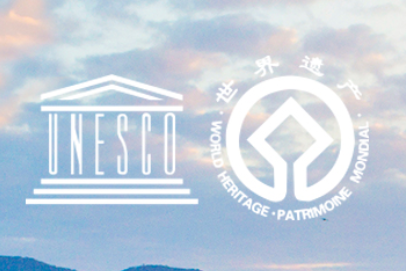
一个远离中原的边陲之地
为什么会成为宋元时期的世界海洋贸易中心?
「 官宣片来了 · 精华版 」
“保护好、传承好、利用好这些宝贵财富,是我们的共同责任,是人类文明赓续和世界可持续发展的必然要求。”习近平总书记向第44届世界遗产大会所致贺信中,深刻地阐明了世界遗产的重要地位和保护世界遗产的重大意义,也为泉州继续做好世界遗产保护工作,指明了方向,提供了根本遵循。
“泉州:宋元中国的世界海洋商贸中心”一共由22处代表性遗产点组成,在阐述泉州作为10~14中国的世界海洋商贸中心的遗产价值上,具备高度的完整性与真实性。22处遗产点有18处国家级文保单位,4处省级文保单位,不仅记载着当时泉州的繁荣景象,也证实了一个由中央、本土和海外多元社群合力开创的特有的海外贸易体系,并造就了该时期世界海洋贸易与文化交流的辉煌。

「 九日山祈风石刻、市舶司遗址、德济门遗址、天后宫、真武庙、南外宗正司遗址、泉州府文庙、开元寺、老君岩造像、清净寺、伊斯兰教圣墓、草庵摩尼光佛造像、磁灶窑址、德化窑址、安溪青阳下草埔冶铁遗址、洛阳桥、安平桥、顺济桥遗址、江口码头、石湖码头、六胜塔、万寿塔。」
△ 宋元泉州海外贸易的兴盛,极大受益于其在水陆联运交通网络方面的飞跃式发展,由一系列桥梁、道路、码头、航标组合而成,并纵贯南北的沿海大通道,将泉州的区域内外连为一体。
△ 22处遗产组成部分之间具有功能、空间、社会、文化上的紧密关联,在推动泉州成为世界性的海洋贸易中心的进程上,构建了一个完备的体系,涉及制度保障、多元社群、城市结构、生产基地、运输网络、区域布局等完备的关联链条。

泉州:宋元中国的世界海洋商贸中心
遗产点简介及对整体价值的支撑
Quanzhou: Emporium of the World in Song–Yuan China
Brief Description of the Component Sites and Their Support of the Overall Value
第一组:制度保障+城市结构
Group One: Institutional Guarantee + Structure of the City
Jiuri Mountain Wind-Praying Inscriptions
◆ 九日山祈风石刻是一组记载宋代在泉州负责海外贸易管理的国家专员、地方官以及皇室成员等为海外贸易商舶举行祈风仪式的摩崖石刻,反映出海神信仰对贸易活动的精神促进,体现了宋代市舶制度下国家力量对海洋贸易的倡导和管控。
—
These are Song Dynasty cliff inscriptions recording the prayer rituals for the safe voyages of ocean-going merchant ships. The ceremonies were held by state commissioners in charge of overseas trade, local officials and imperial clansmen. The inscriptions embody the spiritual impetus that the belief in sea deities provided for trade activities, and reflect the power of the state under the Song Dynasty’s maritime trade system to promote and manage maritime trade. ◆
Site of Maritime Trade Office
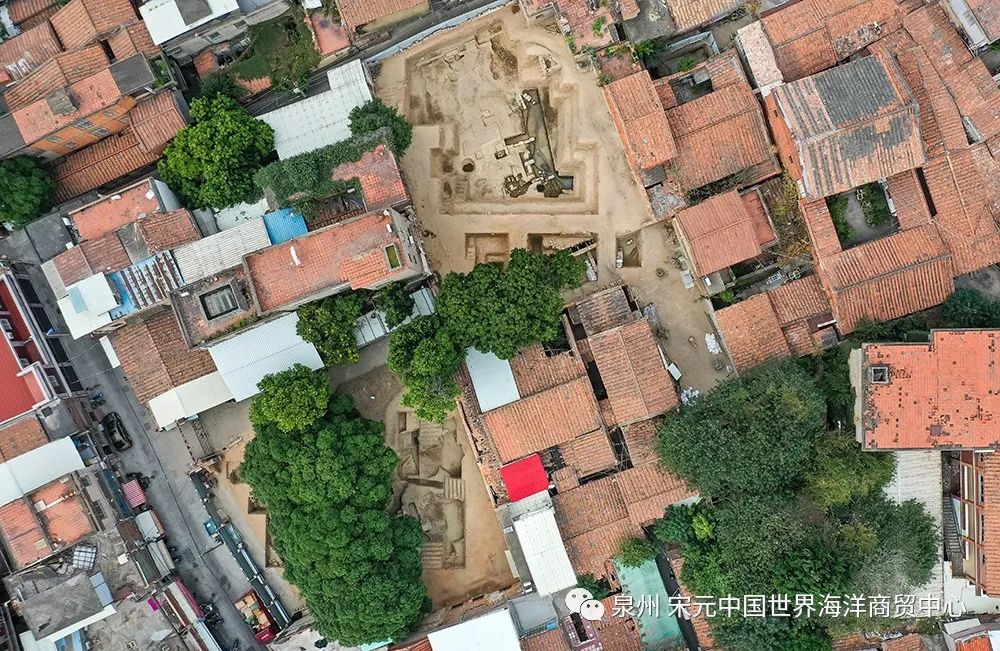
◆ 市舶司是宋元国家政权设置在泉州管理海洋贸易事务的行政机构。设置于1087年,标志着泉州正式成为开放的国家对外贸易口岸,对宋元泉州的经济繁荣、文化交流以及海洋贸易各参与方的共同发展具有至关重要的意义。
—
This was an administrative agency established by the Song-Yuan national regimes in Quanzhou to manage maritime trade affairs. Its establishment in 1087 marked Quanzhou’s rise as a national hub of maritime trade, and was essential to Quanzhou’s economic prosperity and cultural exchanges, as well as the common prosperity of all participants in maritime trade. ◆
Site of Deji Gate
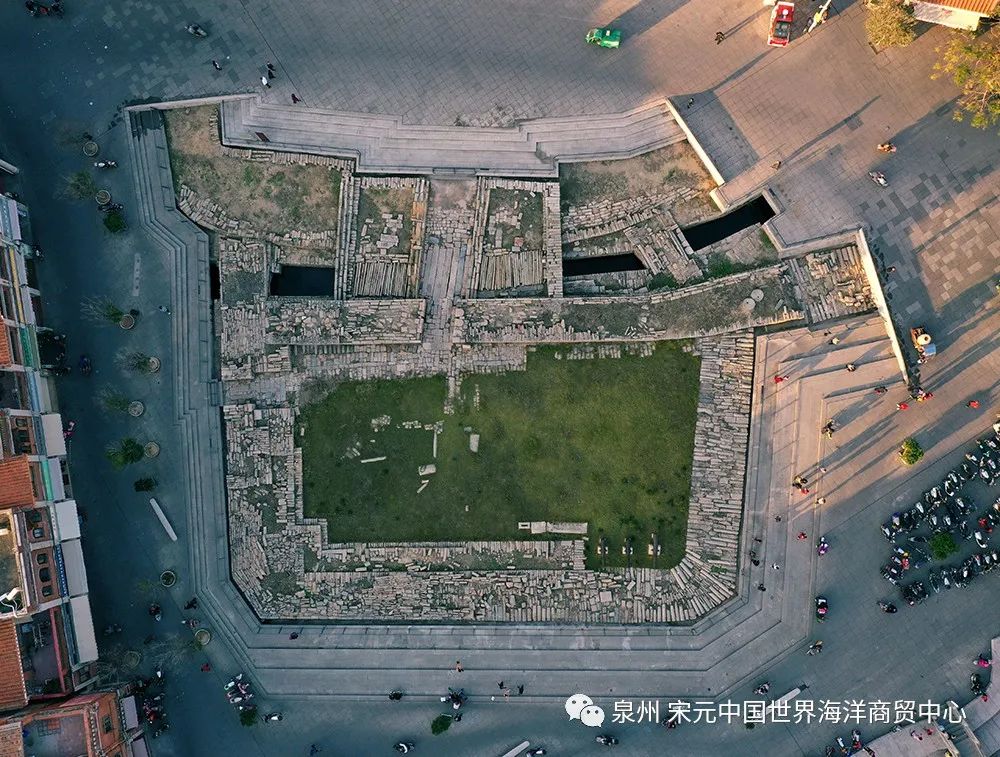
◆ 德济门遗址是宋元泉州城的南门遗址,是进入城市南部商业区的交通要道,记录了宋元泉州城市向南部拓展的历史,体现了官方对海洋贸易和城市商业发展的行政保障。
—
This was the southern gate of the city of Song-Yuan Quanzhou, serving as the main access to the commercial district on the southern side of the city. It bears testimony to the history of Quanzhou’s southward expansion, reflecting the government’s administrative guarantee for the development of maritime trade and commerce within the city. ◆
Tianhou Temple
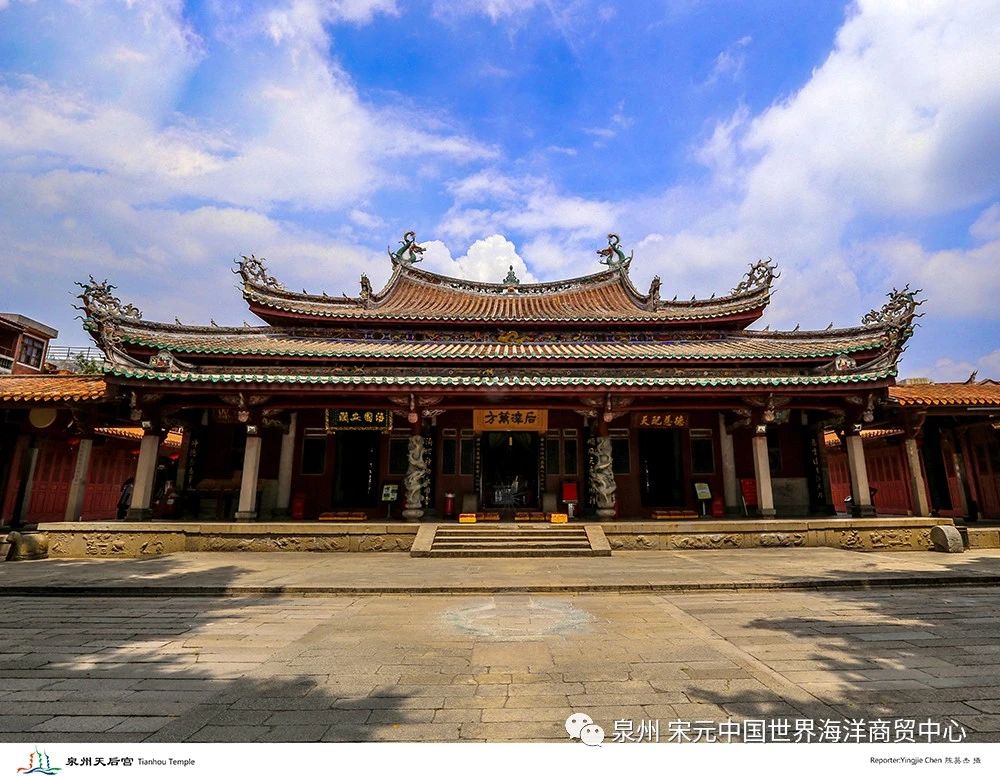
◆ 天后宫是宋元时期起源于泉州本地的海神妈祖的祭祀建筑,也是世界范围妈祖信仰的重要传播中心,见证了妈祖信仰伴随海洋贸易的形成和发展历程,体现出民间信仰与国家意志相结合对海洋贸易发展的共同推动。
—
This temple is dedicated to the worship of the sea goddess Mazu, and is also a major center for the dissemination of Mazu belief around the world. It bears testimony to the formation and development of Mazu belief amid the rising maritime trade, revealing how folk beliefs and the will of the state worked in concert to advance maritime trade. ◆
Zhenwu Temple
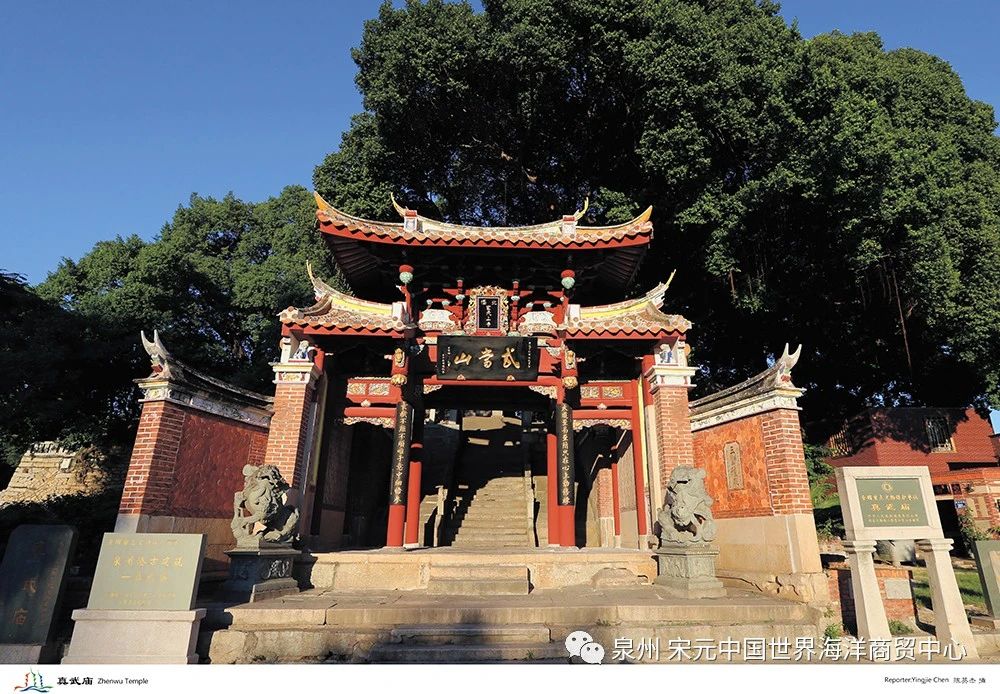
◆ 真武庙是宋元时期祭祀海神真武大帝的道教庙宇,也是古法石港的重要地标。其所承载的海神信仰是宋元时期商人群体从事海洋贸易的重要精神寄托,体现了政府对海洋贸易的鼓励与推动。
—
This is a Taoist temple dedicated to the worship of the Great Emperor Zhenwu and used to be a major landmark within the ancient port of Fashi. The sea deity beliefs embodied by the temple was an important source of spiritual support for merchants who engaged in maritime trade during the Song-Yuan period. The temple reflects the government’s encouragement and support for maritime trade. ◆
第二组 多元社群+城市结构
Group Two: Multi-cultural Communities + Structure of the City
Site of the Southern Clan Office
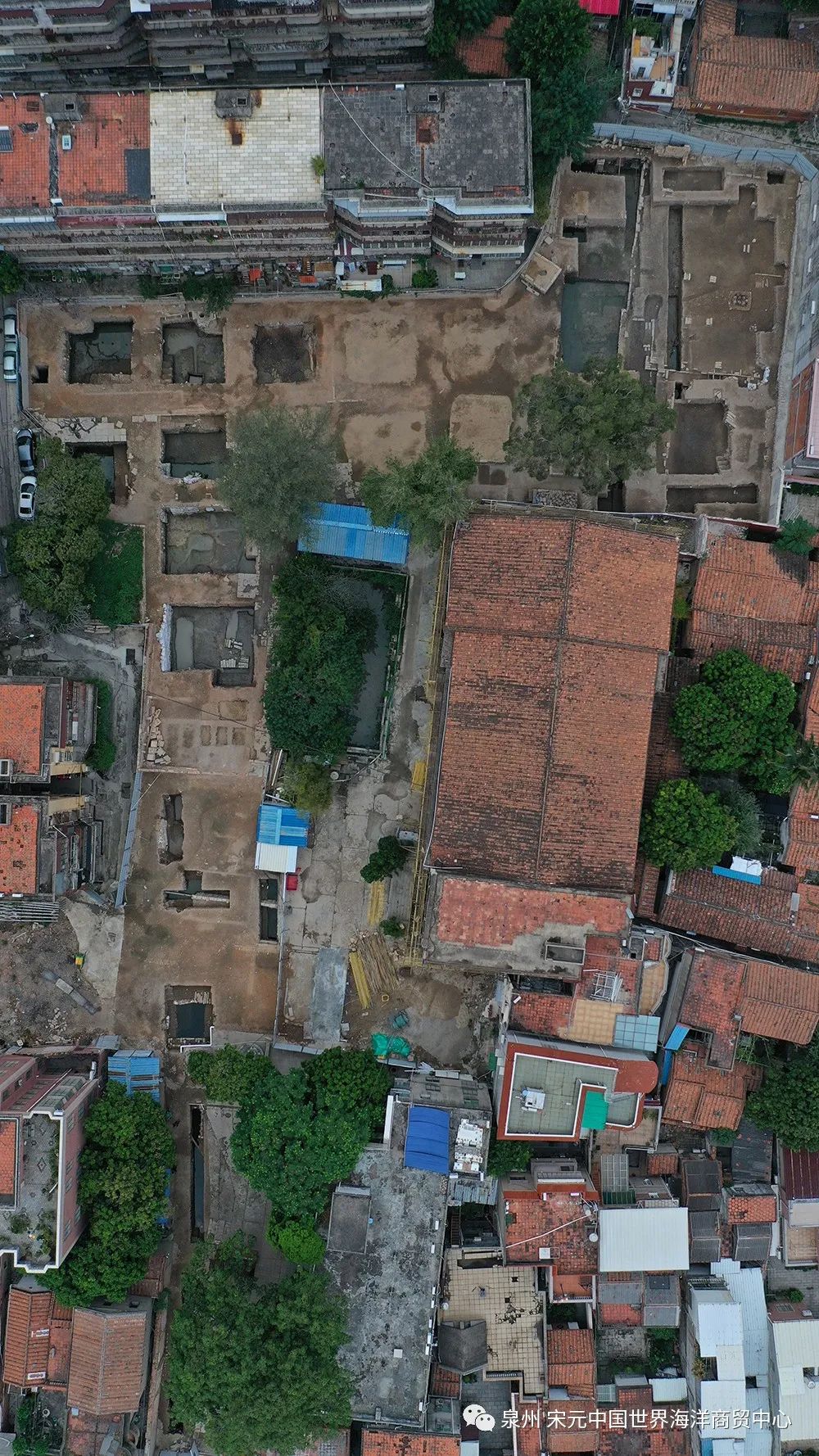
南外宗正司考古发掘现场
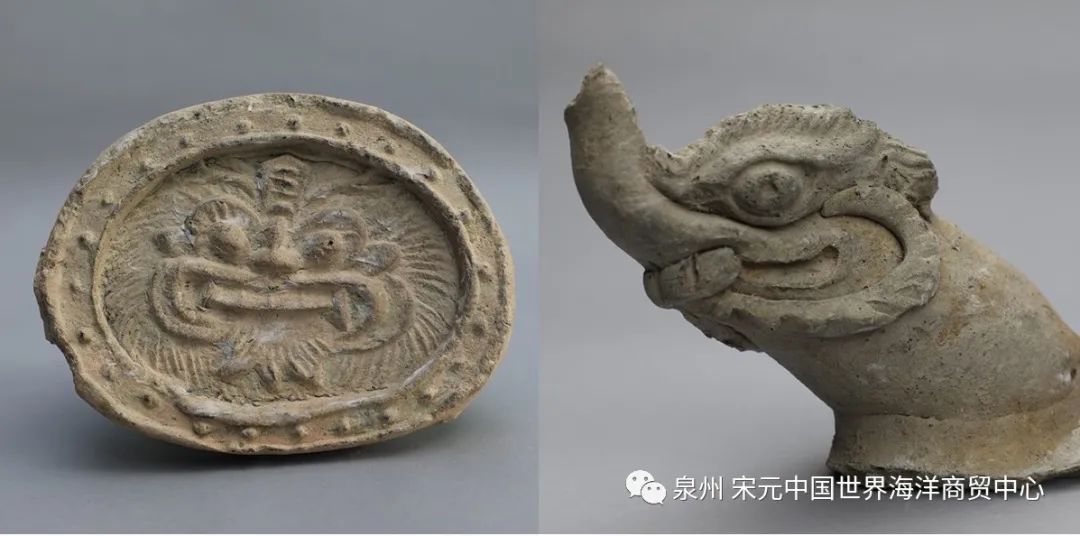
遗址出土的建筑构件
◆ 南外宗正司是1130年以来迁居泉州的宋代皇族群体的管理机构,遗址所代表的宋代皇族群体是泉州世界性多元社群中具有影响力的组成部分。
—
This was an administrative agency established for the Song Dynasty imperial clansmen who relocated to Quanzhou in 1130 and thereafter. The imperial clansmen embodied by this site were the most influential part of Quanzhou’s cosmopolitan multi-cultural communities during the Song Dynasty. ◆
Site of the Southern Clan Office
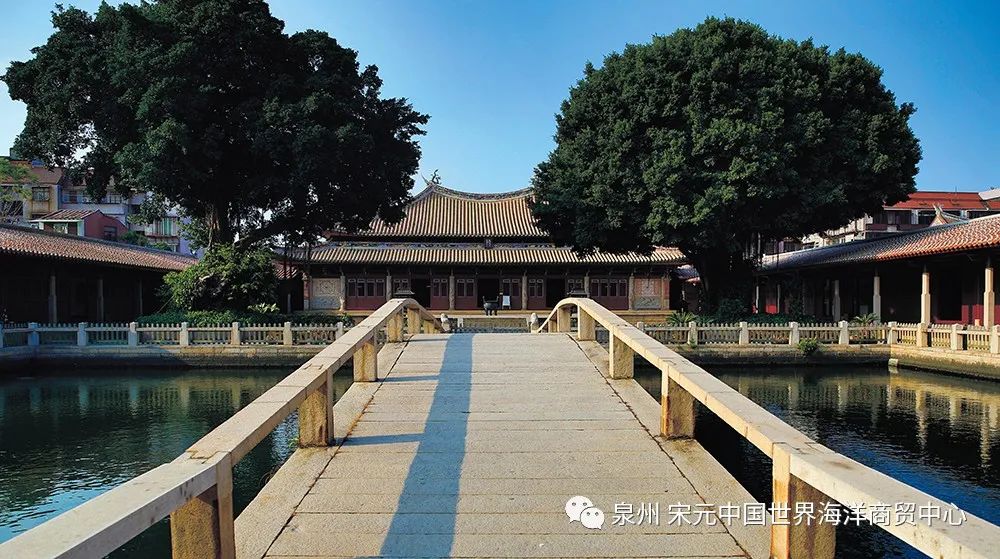
泉州府文庙组群
◆ 泉州府文庙及学宫是儒家祭祀场所和泉州最高等级的教育机构,是包括政治要人和高级知识分子在内的泉州精英群体的象征,这些社会精英在宋元海洋贸易的推动和管理中发挥了重要作用。同时,建筑群的高规制反映了海洋贸易给泉州带来的经济和文化繁荣。
—
This was a place of worship for Confucius and the highest educational institution in Quanzhou, embodying Quanzhou’s intellectual and political elites. These social elites play a vital role in the promotion and administration of maritime trade during the Song and Yuan Dynasties. The high standard of the architectural complex reflects the economic and cultural prosperity that maritime trade brought to Quanzhou. ◆
Kaiyuan Temple
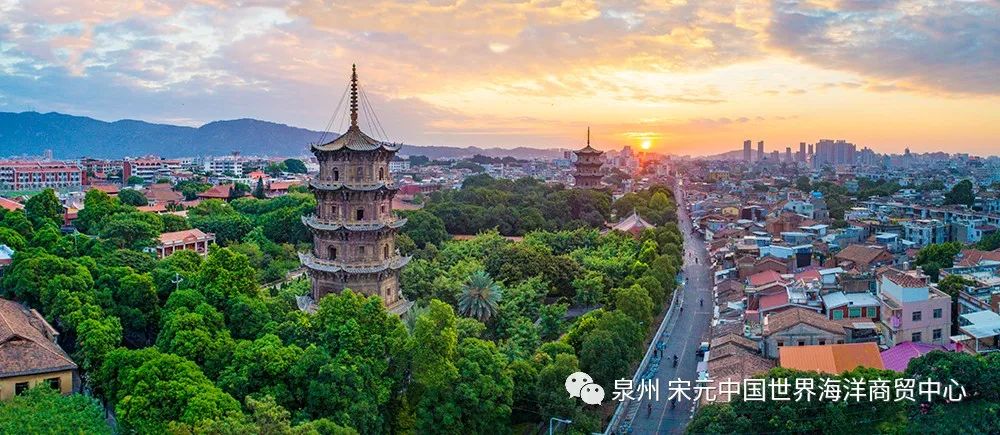
晨曦中的开元寺东西塔
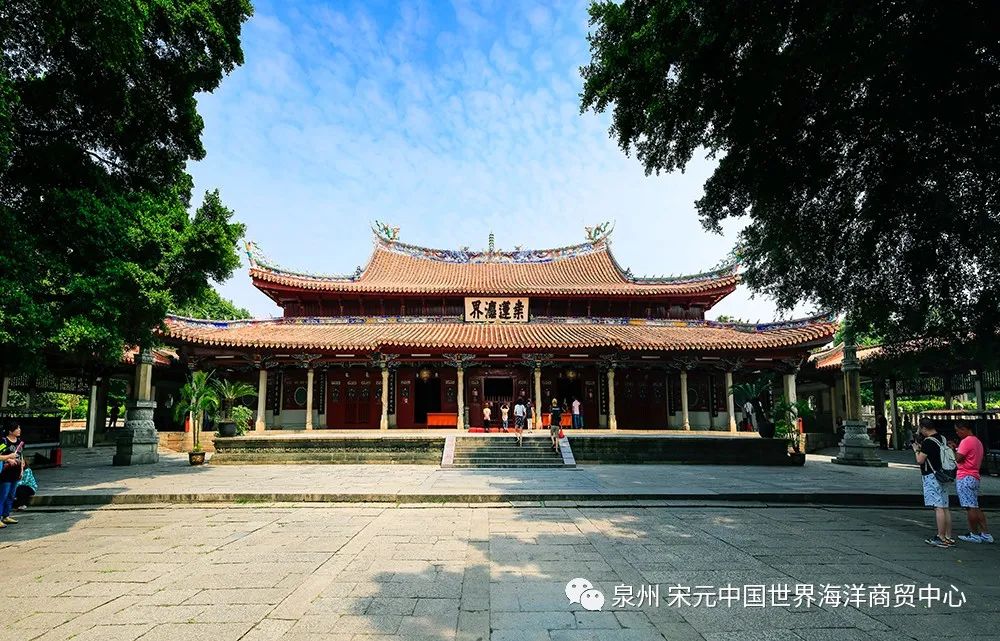
开元寺的大雄宝殿
◆ 开元寺是宋元泉州规模最大、官方地位最突出的佛教寺院,其寺院经济及高规制的建筑、多元文化遗迹反映出宋元海洋贸易带给泉州的经济繁荣和文化共存特征。同时,与寺院关联的宋元官方、僧侣、地方大族等人群对宋元社会经济和海洋贸易具有重要贡献。
—
This was the largest and highest government-sanctioned Buddhist temple in Song-Yuan Quanzhou. Its economic and multi-cultural relics, as well as its high architectural standard, reflect the economic prosperity and fusion of diverse cultures in Song-Yuan Quanzhou thanks to maritime trade. They also testify to the significant contributions of government officials, monks and powerful local clans to the city’s socio-economic development and maritime trade during the Song-Yuan period. ◆
Statue of Lao Tze
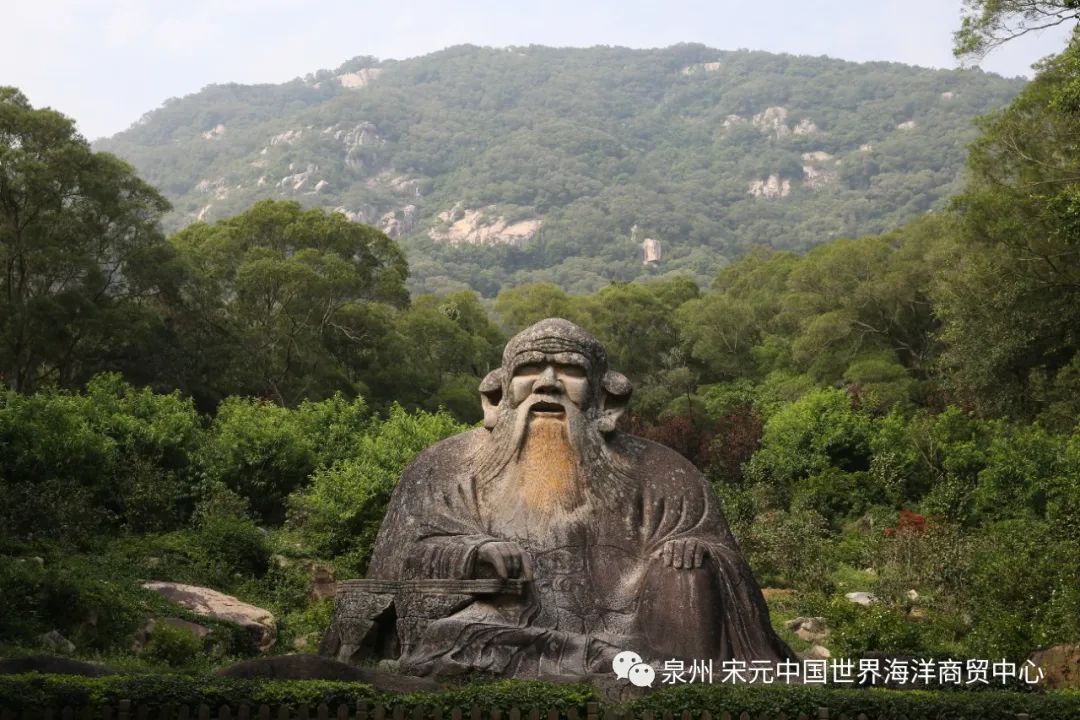
清源山中老君岩造像
◆ 老君岩造像是道家学说创始人老子的巨型石雕像,也是中国现存最大的道教石雕造像。老君岩是宋代泉州官方主流意识形态的象征,体现了泉州港口依托农业帝国的独特历史文脉,也反映出世界海洋贸易中心多元、活跃的文化特征和港口的繁荣成就。
—
This massive stone statue of Lao Tze, founder of Taoism, is China’s largest extant Taoist stone statue. It was a symbol of Quanzhou’s official mainstream ideology in the Song Dynasty. The statue reveals the unique historical context of Quanzhou as a port city sustained by the agricultural empire; it also embodies the flourishing diverse cultures in Quanzhou as a global maritime emporium, as well as the prosperity and achievements of the port. ◆
Qingjing Mosque
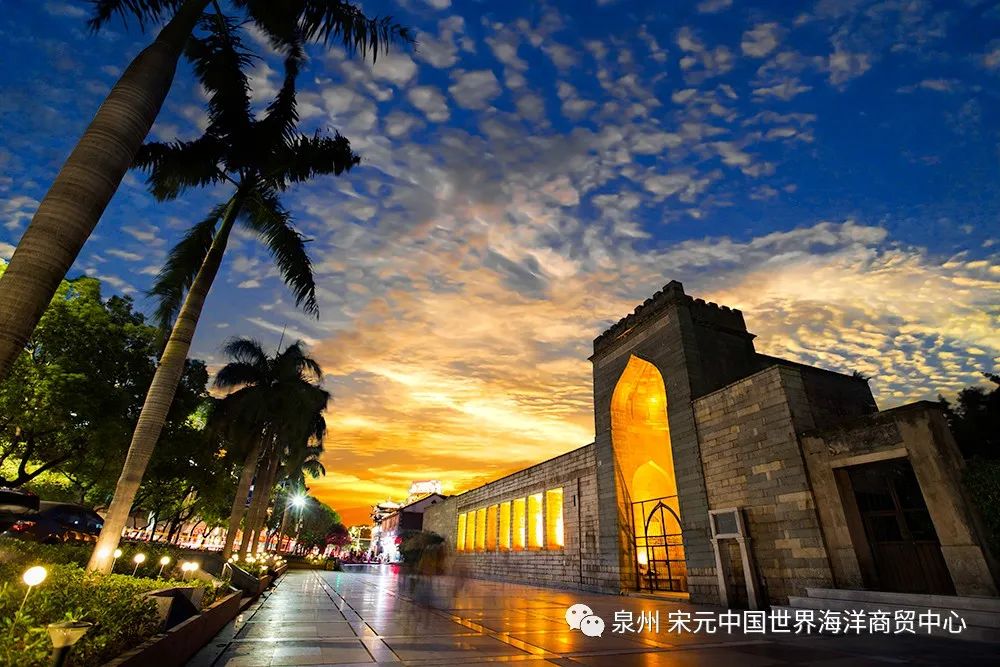
余晖下的清净寺
◆ 清净寺是宋元时期跨越重洋来泉州营商的波斯、阿拉伯等地穆斯林商人及其族群的珍稀物证。见证了活跃在泉州的外国族群的文化、宗教和生活传统,也见证了宋元泉州的人群汇聚、商贸往来和文化繁荣。
—
This mosque bears invaluable testimony to the presence of Muslim merchants from Persia and Arabia who traveled across the vast oceans to Quanzhou during the Song and Yuan Dynasties to engage in commerce. It stands as a testament to the culture, religion and lifestyles of foreign peoples that were active in Quanzhou during that time. They also serve as evidence of the population demographics, commerce and trade, and cultural prosperity of Song-Yuan Quanzhou. ◆
Islamic Tombs
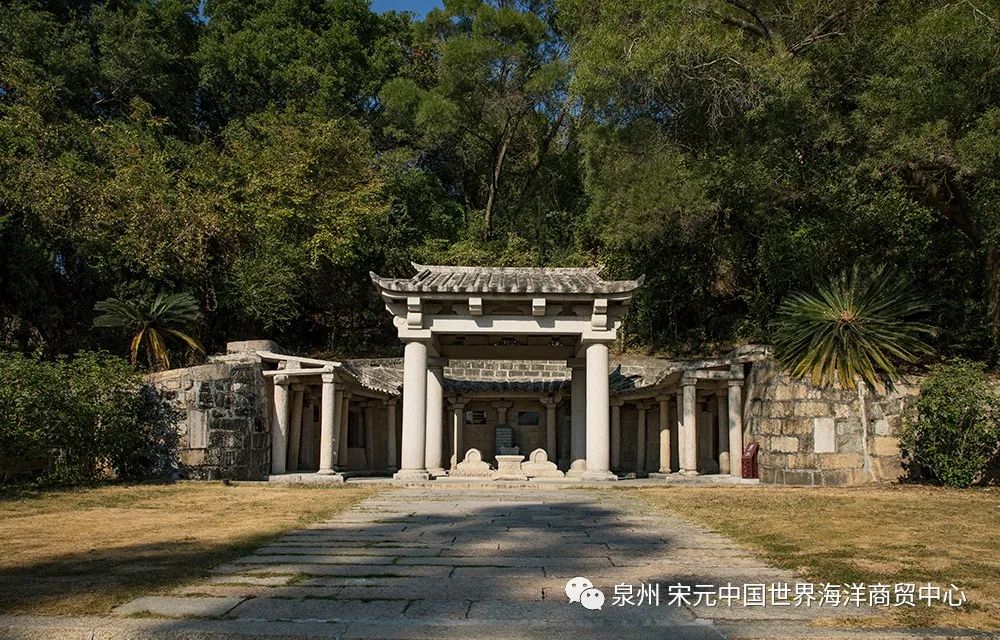
◆ 伊斯兰教圣墓是7世纪来到泉州的两位伊斯兰教圣徒的墓地。墓地于1322年进行了修缮,与清净寺共同见证了穆斯林商人及其族群在泉州的活动,反映了宋元泉州多元文化的交往与融合。
—
These are the resting places of two Muslims who reached Quanzhou in the 7th century AD. They were renovated in 1322. Together with Qingjing Mosque, they bear testimony to the activities of Muslim merchants and their ethnic groups in Quanzhou during the Song and Yuan Dynasties, embodying the interchange and fusion of diverse cultures in the city during that era. ◆
Statue of Mani in Cao’an Temple
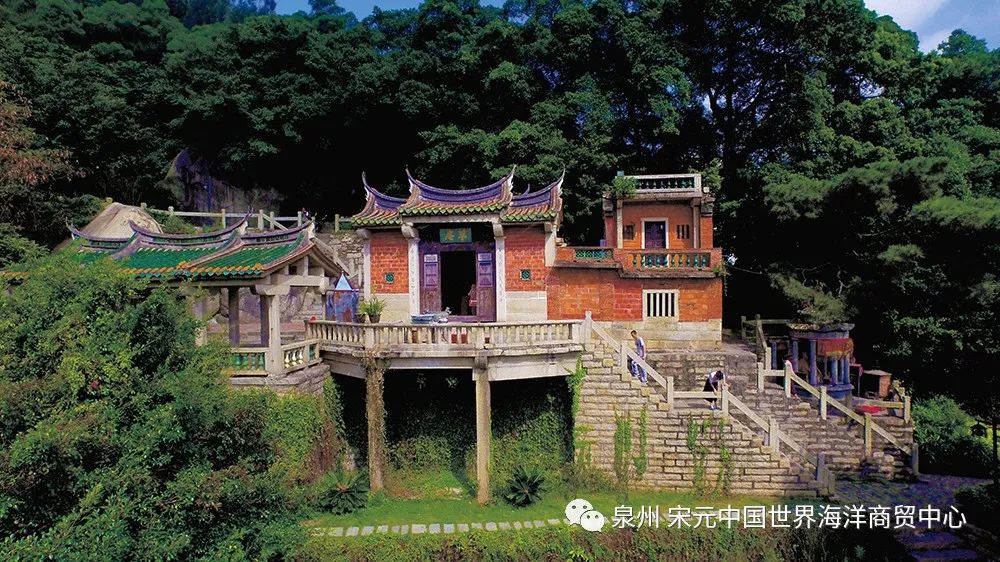
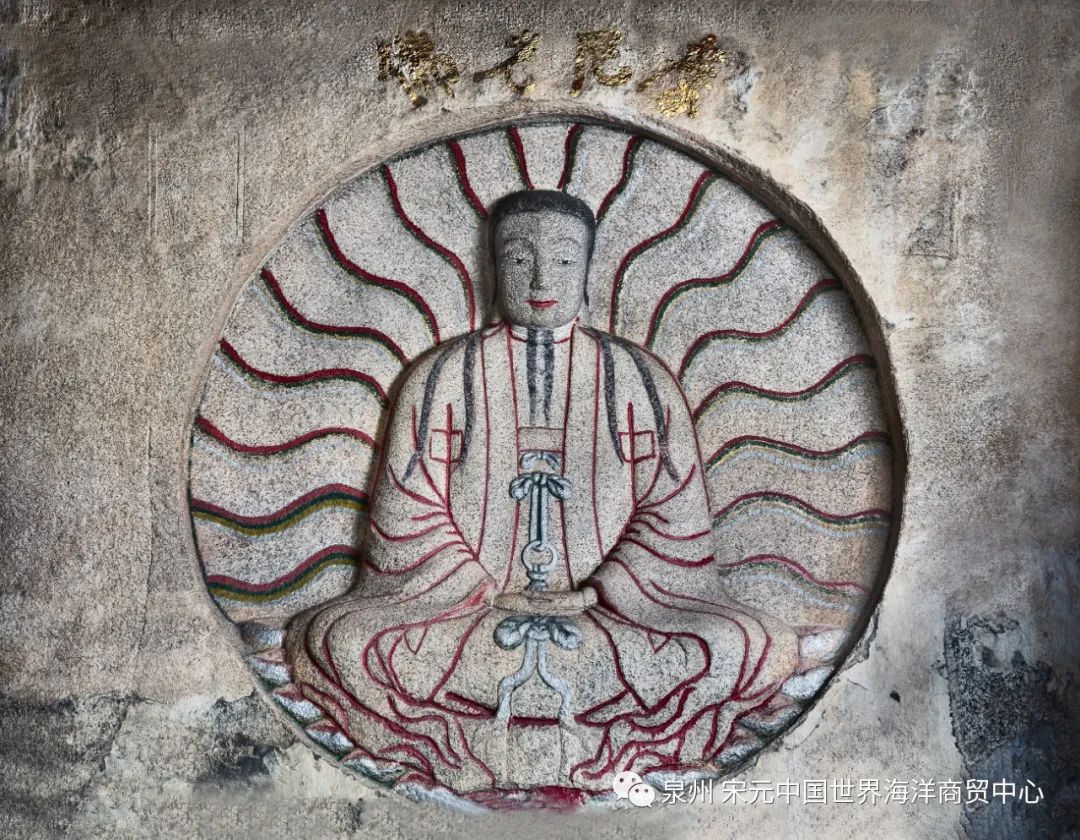
上图:草庵 下图:摩尼光佛造像
◆ 草庵摩尼光佛造像是宋元泉州摩尼教传播的重要史迹,显现出世界海洋贸易中心强大的文化包容力,其蕴含的文化融合特征为宋元泉州世界性多元社群间广泛的价值观交流奠定了基础。
—
This is a major monument testifying to the dissemination of Manichaeism in Song-Yuan Quanzhou. It displays the extraordinary cultural inclusiveness of Quanzhou as a global maritime emporium. The fusion of diverse cultures embodied by this statue laid the foundation for the broad exchange of values among the cosmopolitan multi-cultural communities in Song-Yuan Quanzhou. ◆
第三组 商品产地
Group Three: Production Sites
Sites of Cizao Kilns (Jinjiaoyi Hill Kilns)
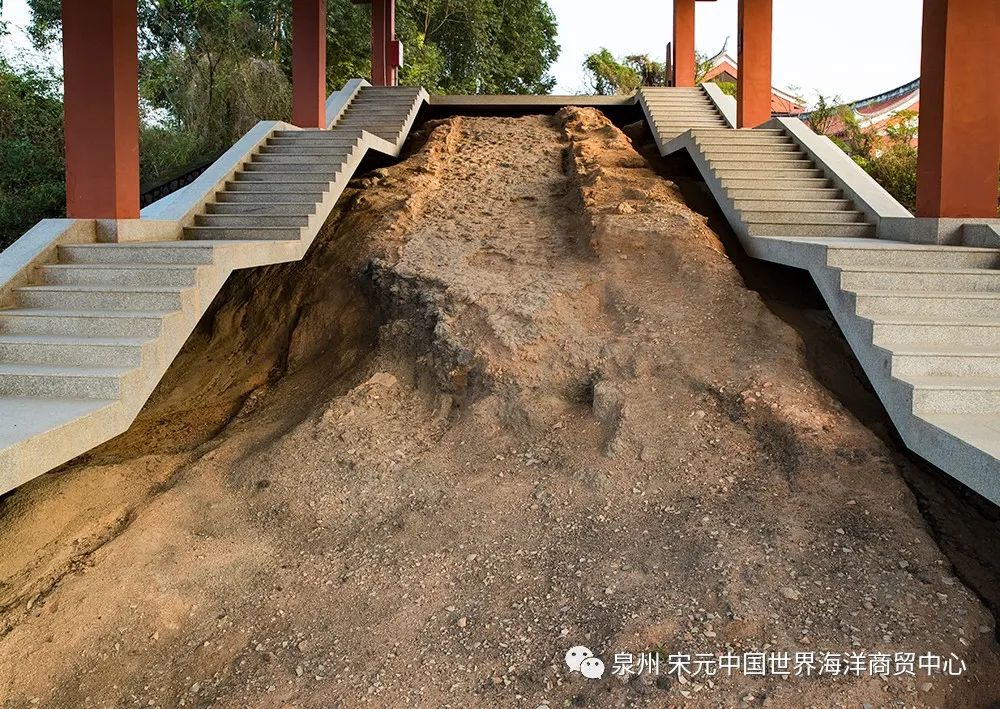
◆ 磁灶窑址(金交椅山窑址)是宋元时期泉州城郊外销瓷窑址的杰出代表,反映了泉州以外贸手工业为显著特点的产业结构,其生产体系和生产规模展现了世界海洋贸易中心强大的基础产业能力和贸易输出能力。
—
These are outstanding examples of the export-porcelain kiln sites that dotted the outskirts of Quanzhou in the Song-Yuan era. They demonstrate the prominence of craft production for export in the industrial structure of Quanzhou as the emporium of the world in Song-Yuan China. The system and scale of production seen in these kilns stand as a testament to Quanzhou’s remarkable capacity for production and overseas trade. ◆
Sites of Dehua Kilns (Weilin-Neiban Kilns and Qudougong Kiln)
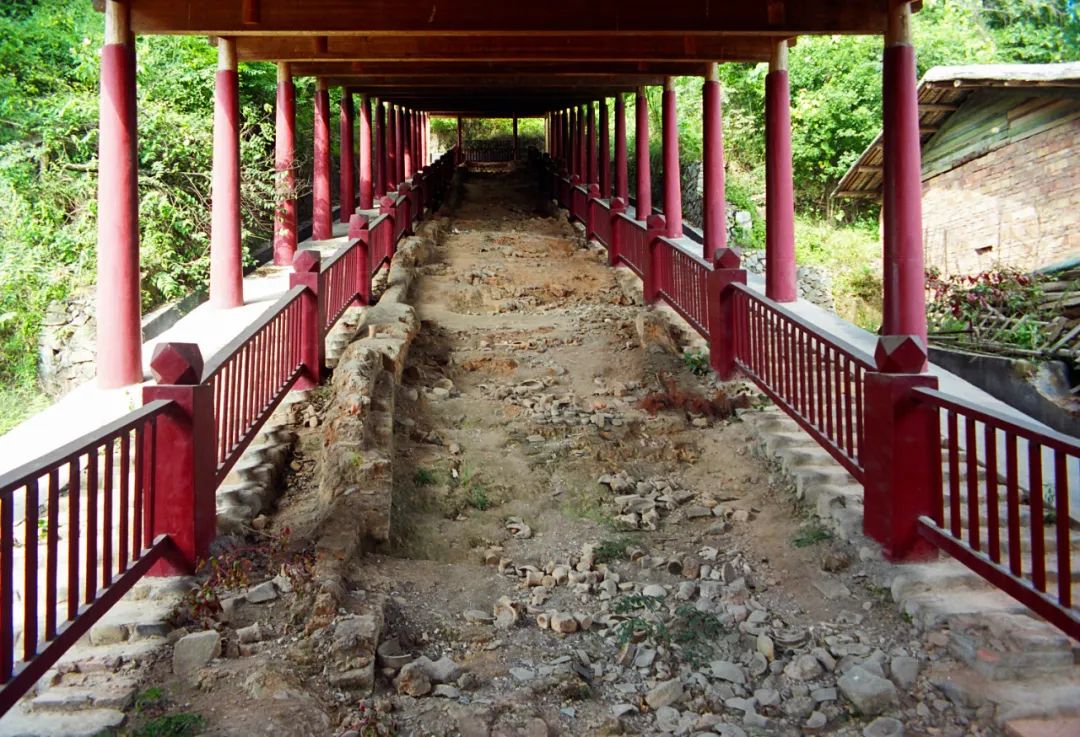
屈斗宫窑址
◆ 德化窑址(尾林-内坂窑址、屈斗宫窑址)是宋元时期泉州内陆地区外销瓷窑址的杰出代表,德化窑在发展过程中创烧出独特的白瓷产品,展现了宋元泉州强大的基础产业能力和贸易输出能力,也显示出海洋贸易推动下泉州本地制瓷产业的创新和发展。
—
These are outstanding examples of Song-Yuan Quanzhou’s hinterland kilns that produced porcelain wares for export. Their rise benefited from the flourishing maritime trade in Quanzhou during that period. Over the course of their growth, Dehua Kilns developed the techniques of firing unique white porcelain products. These sites demonstrate Song-Yuan Quanzhou’s remarkable capacity for production and overseas trade, and embody the innovation and development of Quanzhou’s local porcelain production industry driven by maritime trade. ◆
Xiacaopu Iron Production Site of Qingyang Village in Anxi
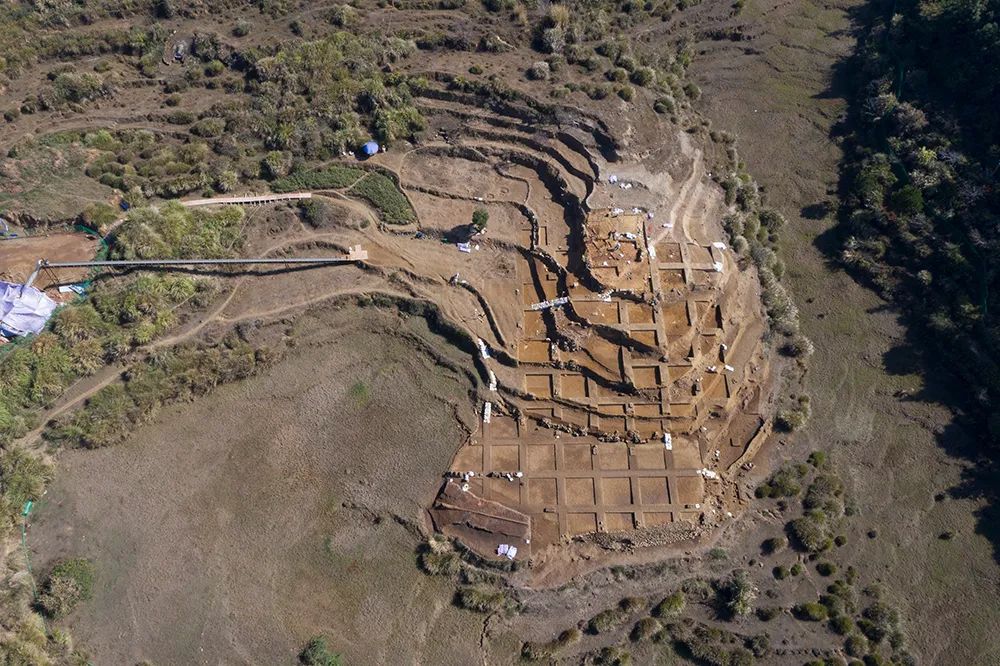
冶铁遗址
◆ 安溪青阳下草埔冶铁遗址是宋元时期泉州冶铁手工业的珍贵见证,其所在的青阳村曾是宋代官方设立的专职铁场之一,它与泉州的陶瓷生产基地共同展现了宋元泉州强大的产业能力和贸易输出能力,同时显示出宋元泉州海洋贸易对泉州内陆腹地经济发展的积极作用。
—
This site bears invaluable testimony to the iron production industry in Song-Yuan Quanzhou, with Qingyang Village being the location of one of the dedicated iron plants set up by the government in the Song Dynasty. Together with Quanzhou’s porcelain production bases, the site demonstrates Song-Yuan Quanzhou’s remarkable capacity for production and overseas trade, and reflects the positive effect of maritime trade on inland Quanzhou’s economic development. ◆
第四组 运输网络
Group Four: Transportation Network
Luoyang Bridge
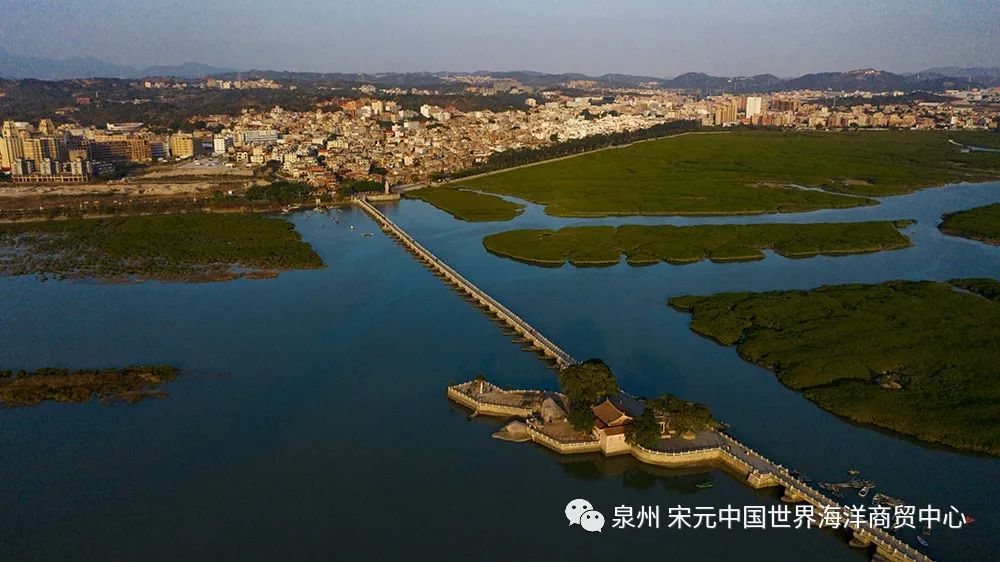
◆ 洛阳桥位于泉州洛阳江入海口,是泉州北上福州乃至内陆腹地的交通枢纽,在泉州运输网络的发展中具有开拓性的里程碑意义。是官方主导、全民合力建造大型交通设施的典范,体现了官方、僧侣等社会各界对商贸活动的推动和贡献。其建造技艺更是代表了当时中国最先进的造桥技术,为宋元时期泉州造桥浪潮积累了宝贵的技术经验。 ◆
—
Situated at the estuary of the Luoyang River, this bridge was a transportation hub connecting Quanzhou northwards to Fuzhou and the nation’s vast heartland. It was a pioneering project and a significant historical milestone in the development of Quanzhou’s water-land transportation network. The bridge is a classic example of large-scale infrastructure facilities whose construction was organized by the government and involved the concerted efforts of the entire society. It reflects the efforts of all segments of society, including officials and monks, to facilitate and contribute to commercial and trade activities. The bridge represented the pinnacle of bridge-building technology in Song-Yuan China, and during its construction, a wealth of precious technical experience was accumulated for the subsequent bridge-building boom in Quanzhou. ◆
Anping Bridge
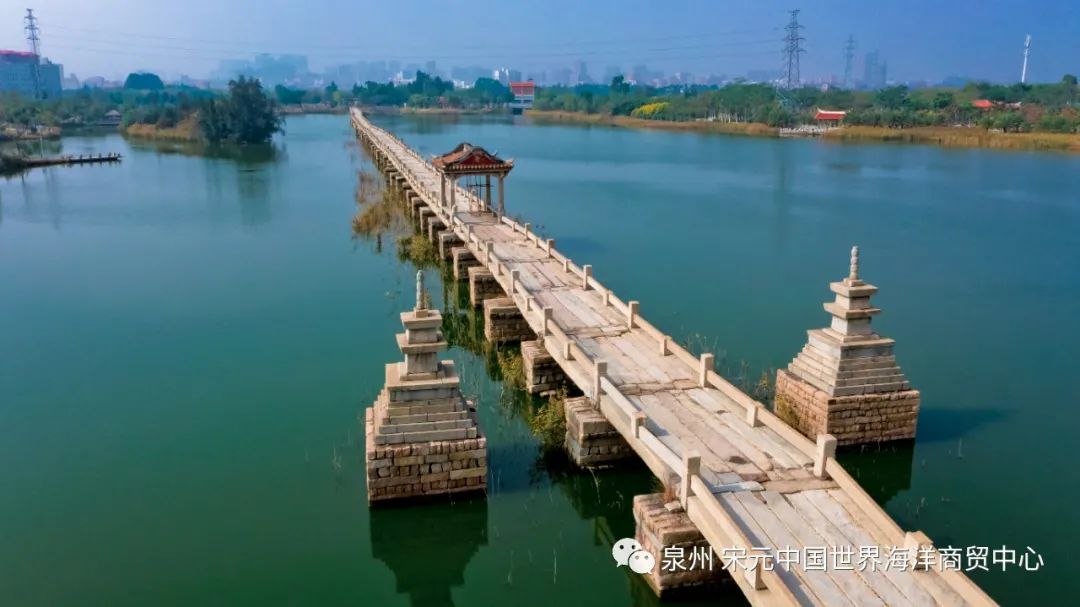
◆ 安平桥是泉州与广阔的南部沿海地区的陆运节点,体现出海洋贸易推动下泉州水陆转运系统的发展。桥长约2255米,是中国现存最长的跨海梁式石桥。
—
This bridge was the node of land transportation between Quanzhou and the vast coastal region in southern China. It reflects the way maritime trade spurred on the development of Quanzhou’s water-land transshipment system. Stretching about 2,255 meters, it is China’s longest extant flat-beam sea-crossing stone bridge. ◆
Site of Shunji Bridge
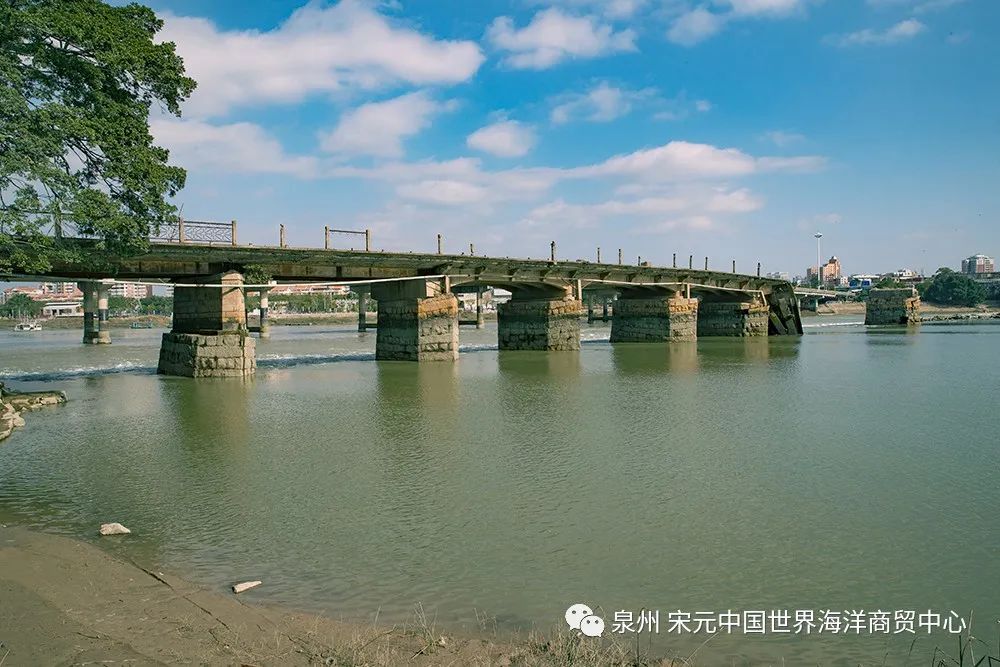
◆ 顺济桥遗址是泉州古城与晋江南岸的陆运节点,是伴随海洋贸易发展而建设的出入古城商业区的主要通道,见证了商业拓展对交通系统的促进,加强了泉州城与南部平原丘陵和码头区的陆运联系。
—
This bridge was the node of land transportation between the ancient city of Quanzhou and the southern bank of the Jinjiang River. Built amid the rising maritime trade, it was the main access to the ancient commercial district in Quanzhou. The bridge strengthened the land transport links between the city of Quanzhou and the southern plains, hills and dock areas. It reflects the improvement of the transportation system thanks to the growth of commerce. ◆
Estuary Docks
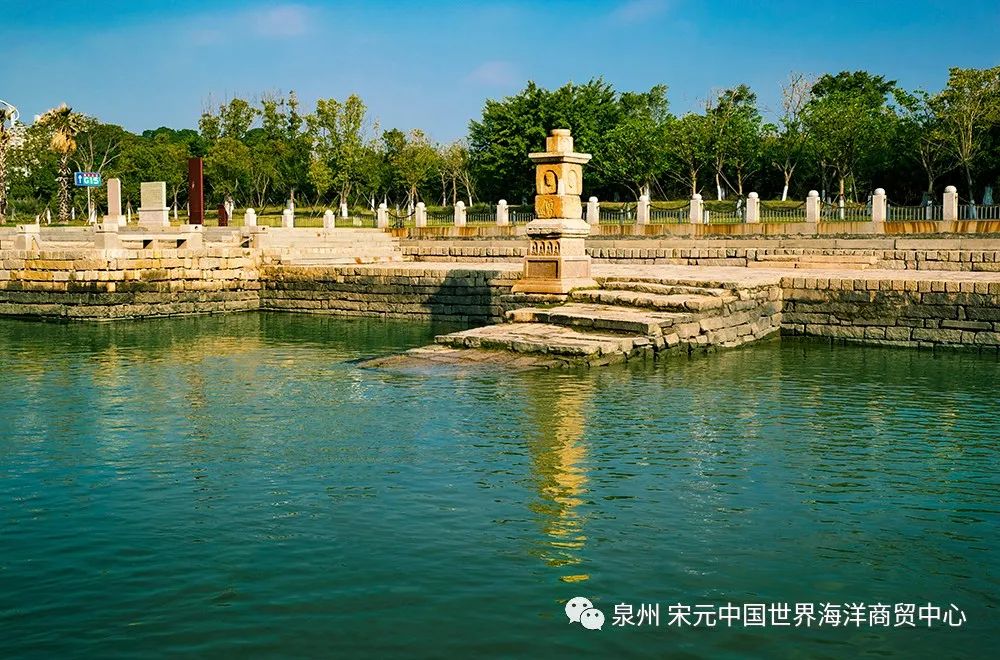
◆ 江口码头是泉州内港法石港的珍贵遗存,是城郊连接古城的水陆转运节点,现保存有文兴、美山两处宋元时期的码头及一处宋代古船遗址。
—
These are precious historical remains of Fashi Port, an inner port of Quanzhou. They were the node of water-land transshipment connecting the outskirts to the ancient city. Two Song-Yuan docks – Wenxing and Meishan – are preserved, along with the site of a Song Dynasty ship. ◆
Shihu Dock
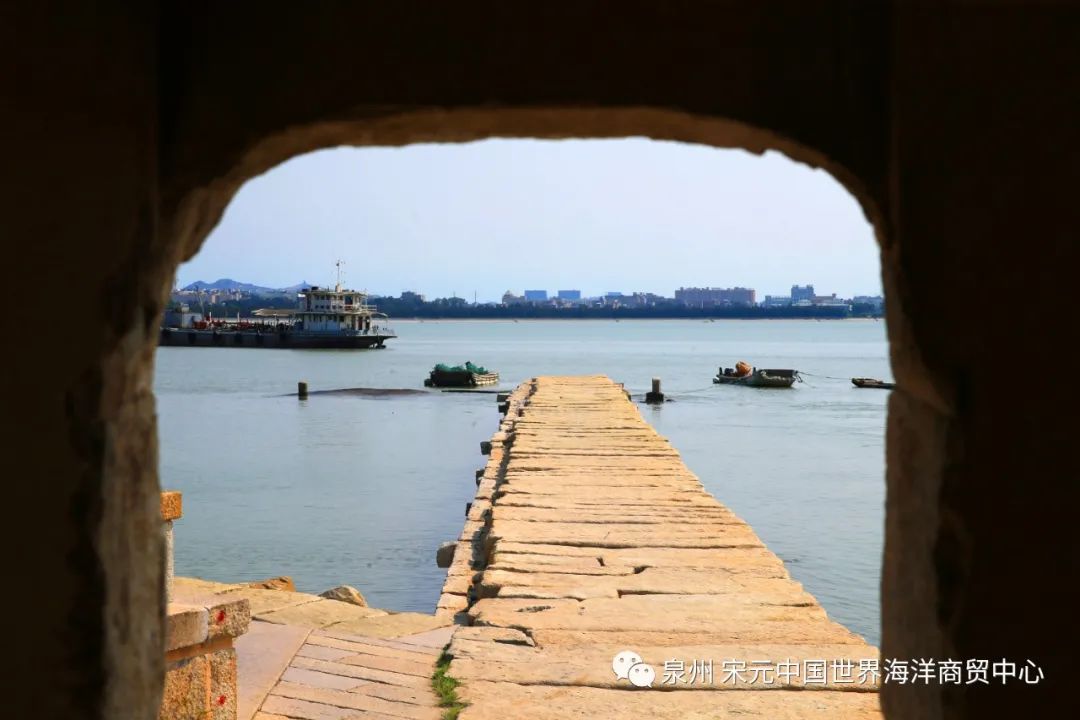
◆ 石湖码头是一处利用天然礁石建造的码头,其主体由一组近岸礁石和通济栈桥组成,是泉州外港码头的珍稀物证,实证了宋元泉州优良的建港条件。它与江口码头共同呈现了宋元泉州港的水陆转运系统。
—
This dock utilized natural reefs in its construction, comprising a group of reefs near the shore and Tongji Jetty. It is an invaluable piece of physical evidence of Quanzhou’s outer port docks, testifying to the fact that conditions in Song-Yuan Quanzhou were extremely conducive to port construction. This dock, together with Estuary Docks, demonstrates Song-Yuan Quanzhou’s water-land transshipment system. ◆
Liusheng Pagoda
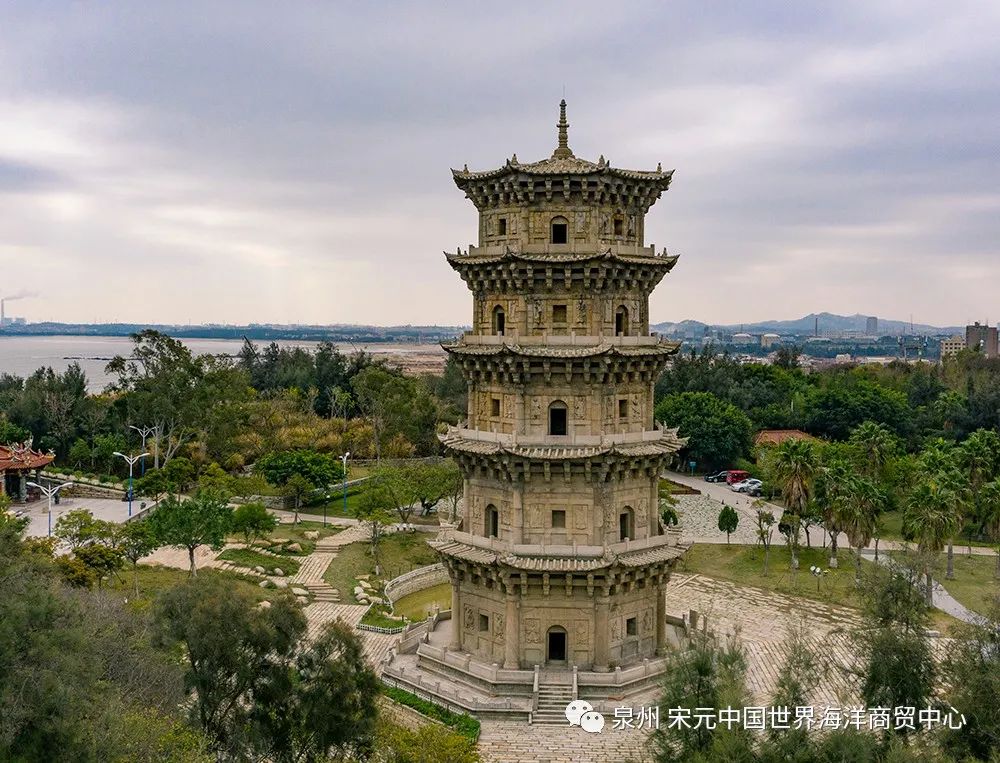
◆ 六胜塔位于泉州湾中部石湖半岛北端的金钗山上,是石湖港的重要历史遗存,是商舶由泉州湾主航道驶向内河港口的地标,并有护佑商旅的作用。
—
Standing atop Jinchai Hill at the northern end of Shihu Peninsula in the middle of Quanzhou Bay, this pagoda is an important historical site at Shihu Port that marked where merchant ships would shift course from the main shipping line in Quanzhou Bay to the inner ports. It is believed to provide divine protection for traveling merchants. ◆
Wanshou Pagoda
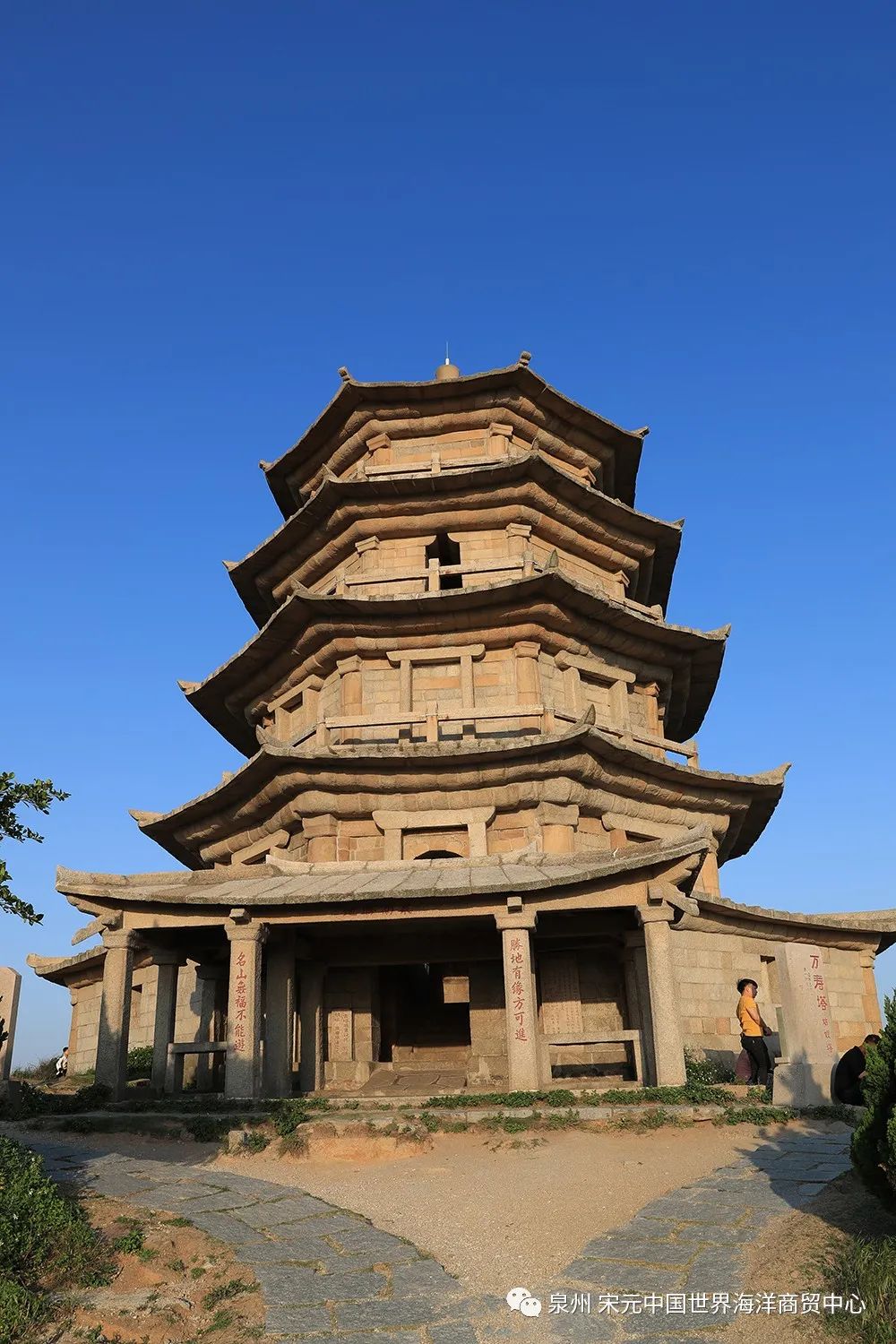
◆ 万寿塔位于泉州城东南方向20公里的宝盖山巅,这里控扼泉州湾与外海交界处,在此建塔锁水口以保平安。万寿塔既是商船抵达泉州港的地标,也是镇守海口、护佑商旅的精神寄托。
—
Standing atop Baogai Hill 20km southeast of the city of Quanzhou, this pagoda overlooks the place where the Bay of Quanzhou meets the outer sea. Building a pagoda in such a location was believed to be able to lock the water outlet and ensure safety. The pagoda was the landmark for merchant ships arriving at the port of Quanzhou; it also served as a source of spiritual support for the local population by guarding the bay and providing divined protection for travelling merchants. ◆
摄影:成冬冬 陈英杰 张涛 王俊 陈晓东 郑永集 廖富魁 郑文桂 陈起拓
泉州曾是10-14世纪世界海洋贸易网络中高度繁荣的商贸中心之一,展现了中国完备的海洋贸易制度体系、发达的经济水平以及多元包容的文化态度。
转载声明:本文转载自「泉州 宋元中国世界海洋商贸中心」,搜索「gh_f66aebd8c817」即可关注,[
阅读原文]。
